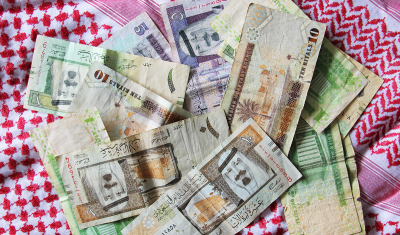Ahead of Saudi Arabia’s landmark Vision 2030 announcement, the Kingdom tested its credit-worthiness from international lenders by raising $10 billion, despite downgrades by Moody’s and Standard & Poor’s (S&P) earlier this year.
Not only was Saudi Arabia able to easily raise the funding, the issuance was oversubscribed – so much so that the Kingdom increased the offering from the original $6 billion to $8 billion and ultimately to $10 billion.
The loan provided a way for Saudi Arabia to ease the stress on local lenders and to set up an international borrowing profile. The appetite for the offering was primarily from Asian banks, according to the Financial Times, but also included JP Morgan.
“Regardless of sovereign credit ratings, Saudi Arabia has to begin issuing international debt as part of its prudent fiscal measures in order to diversify its sources of funding. It becomes more important as domestically issued debt is not finite and domestic liquidity issues are pressing,” Dr. John Sfakianakis, a longtime Saudi economy expert and banker told SUSTG.

Saudi Arabia’s first international debt issuance since 1991 was oversubscribed, a good sign for the Kingdom’s intentions to build a borrowing profile.
The five-year loan opens the way for Saudi Arabia to launch its first international bond issue and is a signal of Saudi Arabia’s newfound “dependence” on foreign capital, Simeon Kerr and Elaine Moore write in the Financial Times, noting that the loan is Saudi Arabia’s first international debt issuance since 1991, when it raised around $1bn in the aftermath of the Iraqi invasion of Kuwait.
Saudi Arabia’s last debt issuance was in August 2015, when it issued $5.33 billion – but only to local banks and institutions in three tranches of five-, seven- and 10-year maturities, according to the Wall Street Journal and Saudi Press Agency.
The need to raise foreign debt comes as Saudi Arabia seeks to curb its drawdown on its sizable fiscal reserves to continue state spending at high levels.
But Sfakianakis, who is based in Riyadh, disagrees with the use of the word “dependence” on foreign capital, telling SUSTG that the strong appetite for the loan signals only the start of building an international profile.
“Oversubscription is a good sign as it demonstrates the world’s appetite for Saudi Arabia’s credit even in an low oil price market. I disagree that Riyadh has found dependence in foreign capital. It’s very healthy for any economy to issue international debt. In fact, Saudi Arabia’s ability to borrow international is a sign of how international investors, who are very savy, evaluate risk,” Sfakianakis said.
“In the case of Saudi Arabia, the response would be very healthy and risk would be priced within very reasonable levels.”









